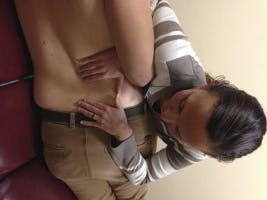This month, the Center for Disease Control (CDC) released their latest recommendation for use of opioids, commonly known as prescription pain medications, based on an extensive review of research and current practice in the United States. The recommendation is a very powerful one that any prescribing medical doctor, physician assistant, or nurse practitioner in the United States will be likely paying a lot of attention to when helping to treat patients with chronic pain. Physical therapists, alike, are turning their attention to this recommendation due to the fact that we often see many patients with chronic pain that are using these medications. Although this recommendation was geared to the medical community, it is very important as a patient to understand the position of the CDC in order to help with your condition and decisions on whether or not to take prescription opioids.
I want to include this statement from the CDC guidelines and then break it down so we can better understand what it means. “Nonpharmacologic therapy and nonopioid pharmacologic therapy are preferred for chronic pain. Clinicians should consider opioid therapy only if expected benefits for both pain and function are anticipated to outweigh risks to the patient. If opioids are used, they should be combined with nonpharmacologic therapy and nonopioid pharmacologic therapy, as appropriate.”1
Nonpharmacologic therapy: This includes such things as physical therapy, behavioral therapy, and weight loss.1
Nonopioid pharmacalogic therapy: tylenol, NSAIDs (such as ibuprofen and naprosyn), and other prescription and over the counter medication that does not include opioids.1
Using the definitions above, the main point of the above CDC statement is that physical therapy and other nonopioid therapies are recommended above using opioid drugs. The only time that opioids may be useful are if the benefits may outweigh the risks to the patient, such as overdose with potential death, tolerance and loss of effectiveness.1 The risks are even higher for people with sleep apnea, liver disease, mental health conditions, alcohol or drug dependency disorders, or pregnant women.1 Due to the fact that research has repeatedly shown that physical therapy can significantly help with hip and knee osteoarthrtis pain, low back pain, fibromyalgia, and other chronic pain conditions, the CDC is strongly advising that patients are given the option of exercise-based physical therapy first before being prescribed opioids to manage their pain.1 The last sentence of the statement above reinforces the use of physical therapy alongside the use of prescription pain medication if they must be used, due to the positive effects of physical therapy treatment shown in research.1
So, what’s the take home message? If you are experiencing pain and are having a discussion with your prescribing practitioner regarding pain medication, make sure that they have read and understand the recent CDC recommendations. If they don’t bring up physical therapy, be an advocate for yourself and ask if they think it would be helpful in your situation, because the research points to the answer being “yes!”.1 If you are currently taking opioid medication, please talk to you prescribing practitioner about strategies for managing your medication use. Make sure that you call us to schedule an appointment to speak with a physical therapist regarding your chronic pain.
- Dowell D, Haegerich TM, Chou R. CDC Guideline for Prescribing Opioids for Chronic Pain — United States, 2016. MMWR Recomm Rep 2016;65:1–49. DOI: https://dx.doi.org/10.15585/mmwr.rr6501e1.







